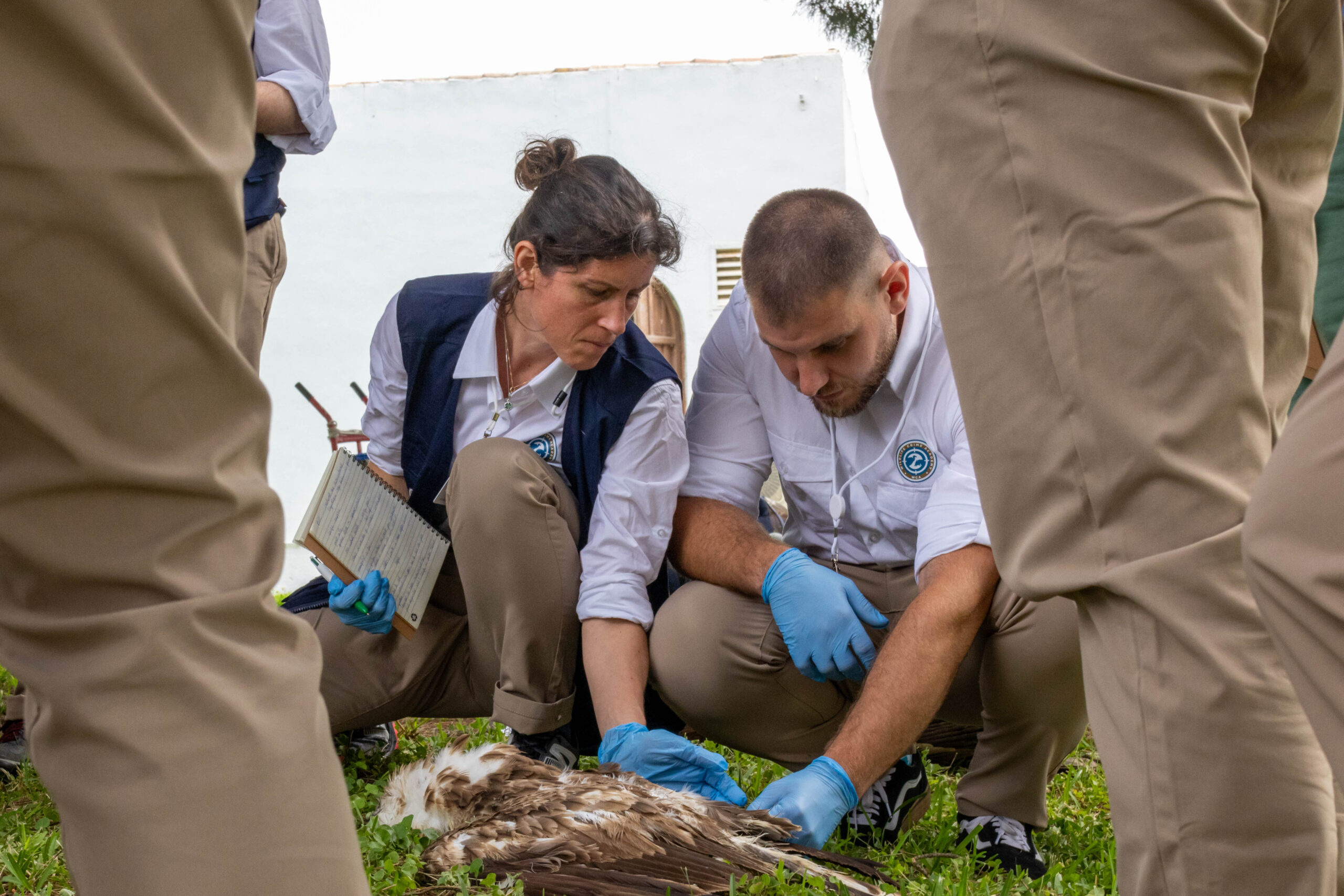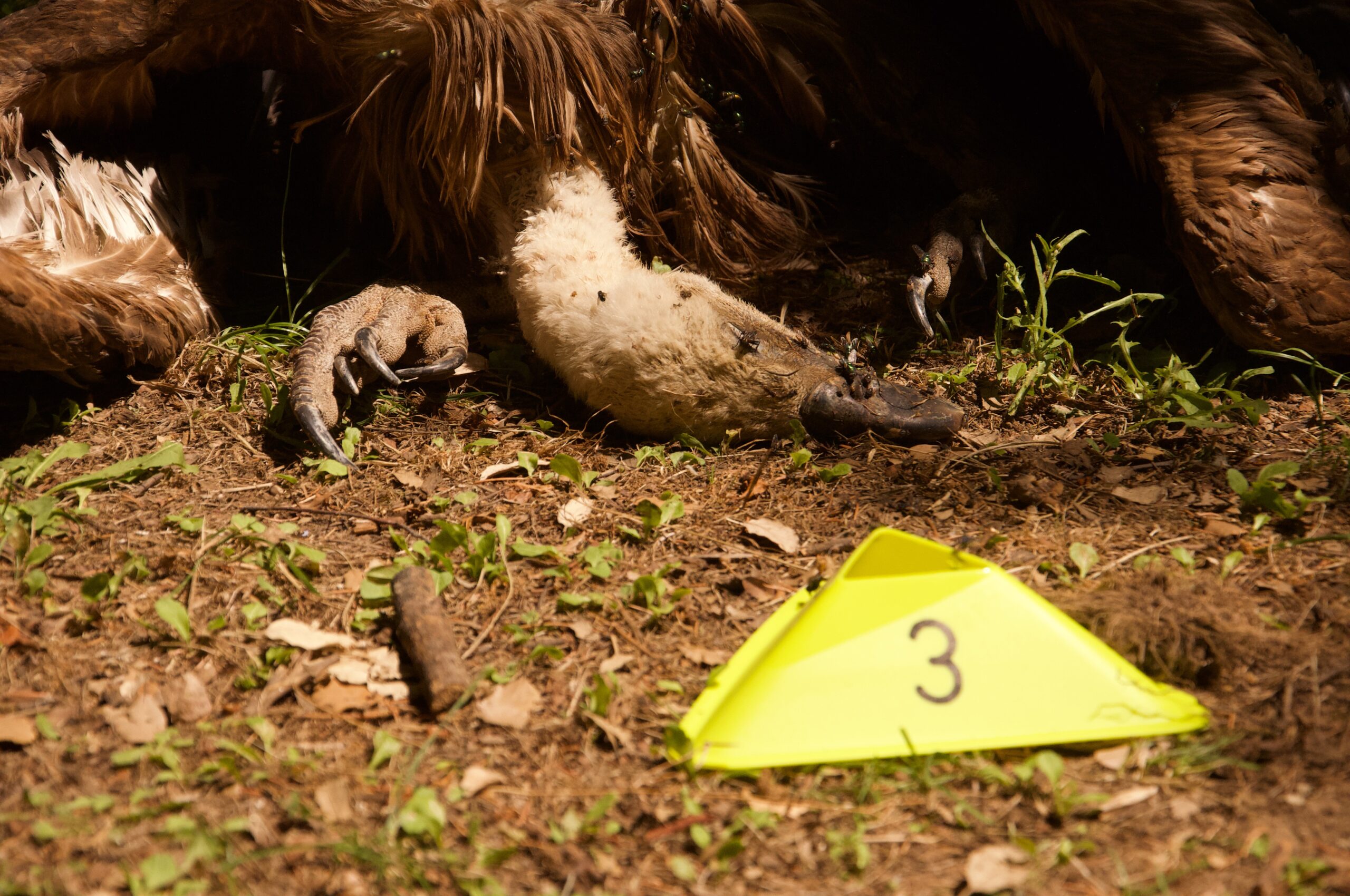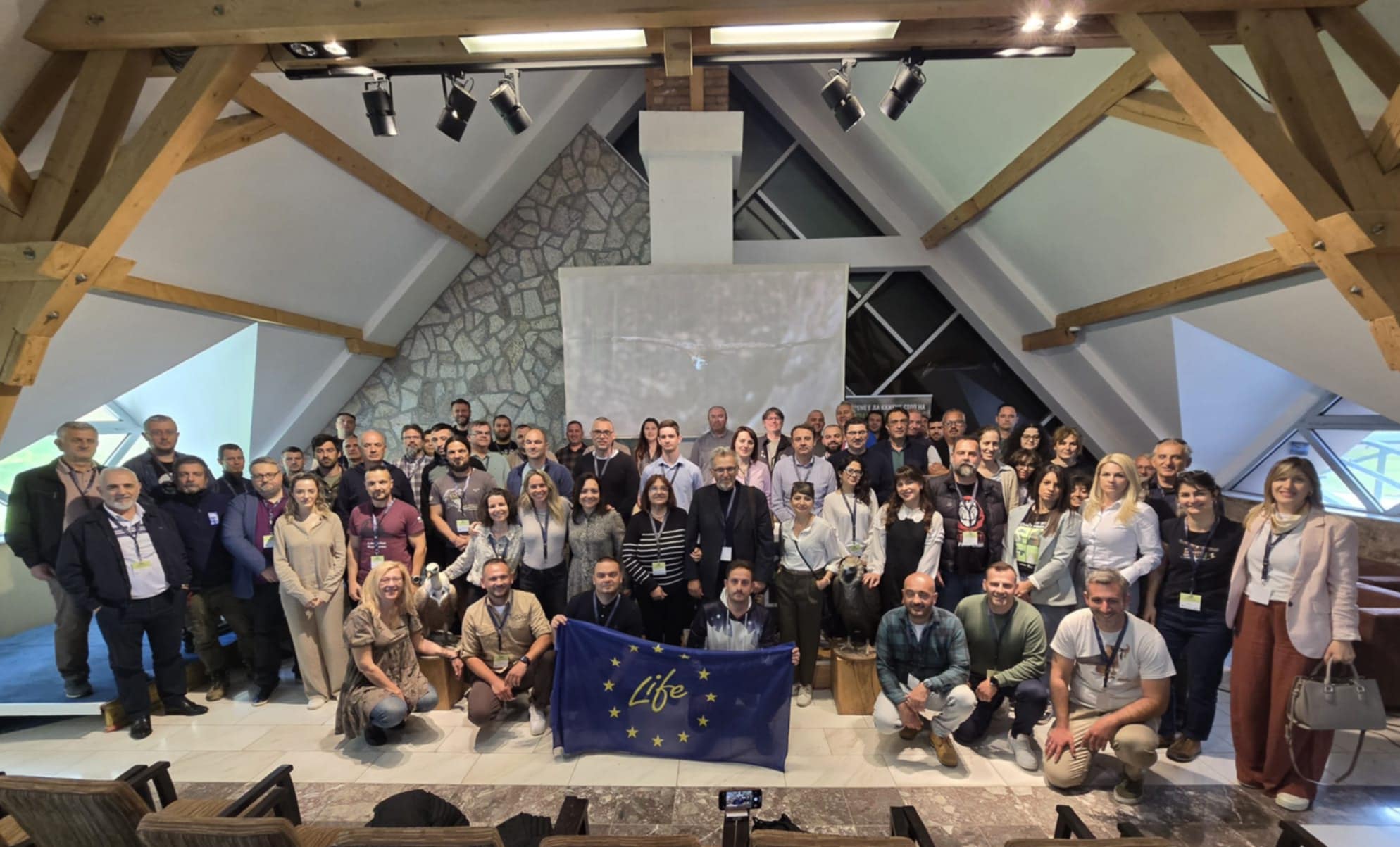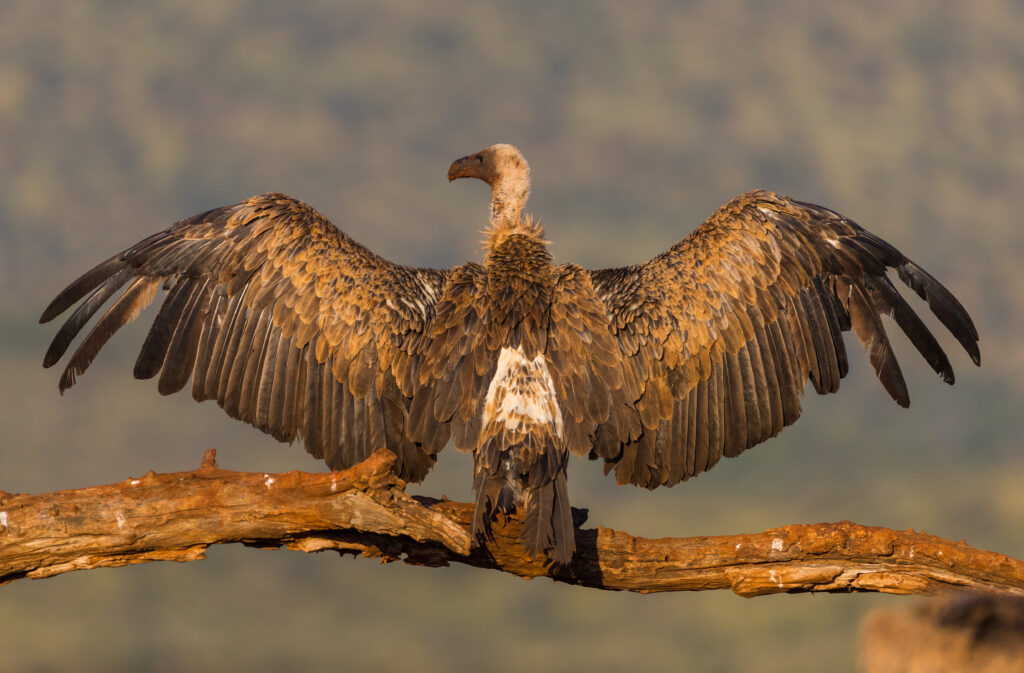
Protected areas (PAs) are crucial tools for biodiversity conservation, and this is also the case for vulture populations in Africa. PAs can have a positive impact on wildlife populations by preventing land-use change, halting habitat degradation and reducing specific anthropogenic threats. Yet, poor management, external pressures such as poaching or insufficient funding can undermine the ecological effectiveness of PAs. In this context, wide-ranging species are particularly challenging to conserve as they have very large home ranges and thus are vulnerable to threats outside PA boundaries.
Threats to African Gyps Vultures and the need for Vulture Safe Zones
Among the species that face extinction are the three species of African Gyps vultures – the Rüppell’s Vulture (Gyps rueppelli), the Cape Vulture (Gyps coprotheres) and the African White-backed Vulture (Gyps africanus). These vultures are particularly vulnerable to poison-induced mortality as local communities often use carcasses laced with pesticides to retaliate against livestock depredation by large carnivores. Vulture Safe Zones (VSZ) have proven effective in Asia to foster the recovery of vulture species heavily impacted by diclofenac poisoning. However, it remains unknown if the same strategy could be used for vulture conservation in Sub-Saharan Africa to implement effective bans of pesticide-based poisoning over large areas. Therefore, new insight into the movement ecology of Gyps vultures was needed to assess the scale required to implement effective conservation actions across their life cycle.
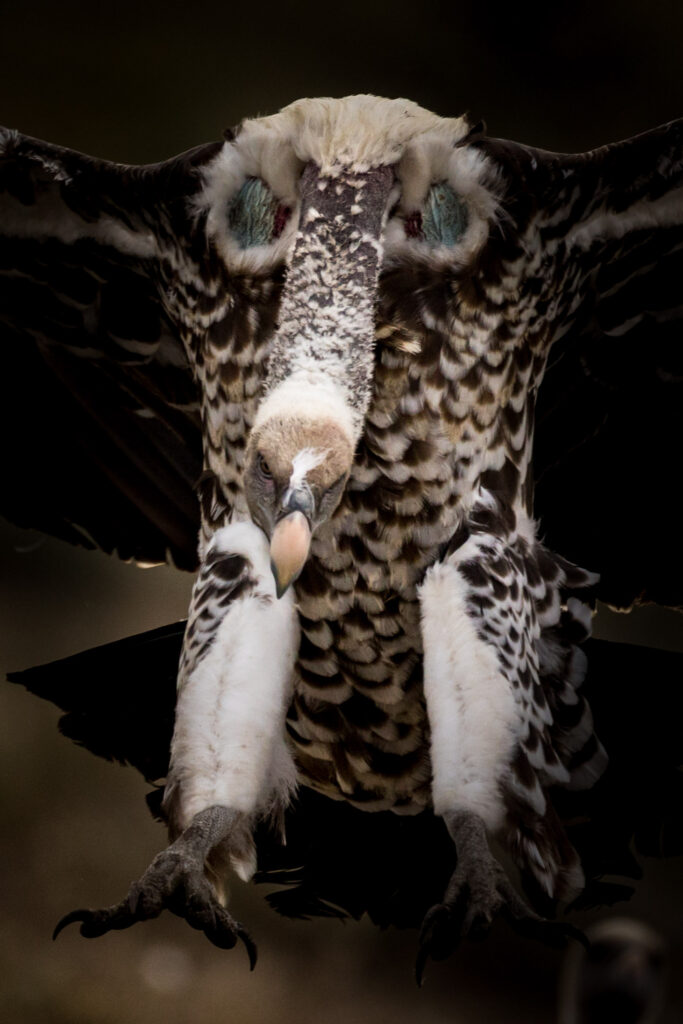

Understanding vulture home range sizes
This study, led by Dr Adam Kane from University College Dublin, aimed to understand the drivers of vulture home range size and the percentage of overlap with African protected areas. The authors combined a large telemetry dataset for three Gyps vulture species tagged in eight African countries (see Figure 1) over fifteen years (2004 to 2019). A total of 163 individuals were captured and tagged with GPS transmitters and their home ranges were estimated using Brownian Bridge Models.
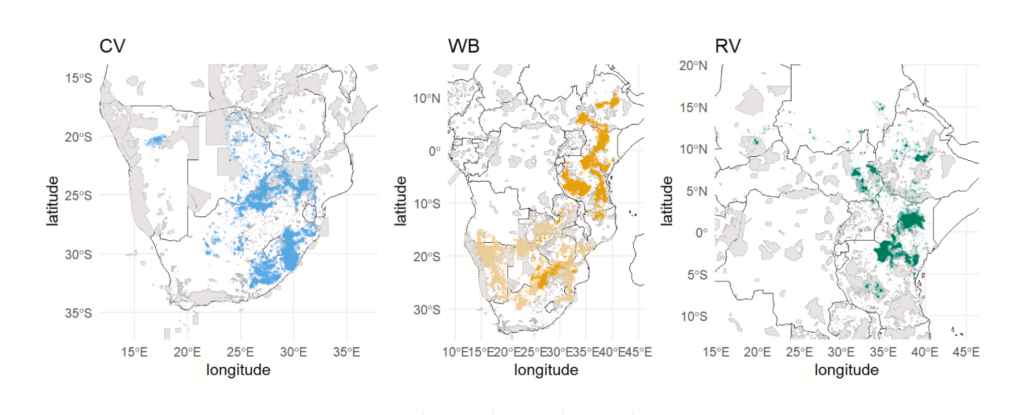
Drivers of vulture home range size and variations
The results obtained revealed that these three vulture species have some of the largest home ranges of any terrestrial, non-migratory species in the world. Variations in home range size were linked to age, breeding status, species, and season. Indeed, immature birds had consistently larger home ranges than breeding and non-breeding adults, indicating that they might widen their foraging range in response to competition with adults.
Factors affecting home range size of African Gyps species
Contrary to predictions, the smaller tree-nesting White-backed Vulture did not have a consistently smaller home range than the two cliff nesting species. Food availability at the territory level probably has an effect on the home-range size of the three African Gyps species. To better understand these aspects, further research is needed on the respective influence of feeding stations, bush encroachment and spatial variations in carcass availability (livestock versus wild ungulate) on vulture home range size. Immature Rüppell’s vultures had the largest home ranges recorded in this study. In addition, home range size in this species increased during the wet season resulting from lower carcass availability due to the migration of large ungulate herds out of the Mara-Serengeti ecosystem.
Protection of vulture habitats in Africa
In contrast to what was expected, Cape vultures had the lowest amount of overlap with protected areas, i.e. 34% for adults and 16% for immatures. Despite the high PA coverage in South Africa and the relatively small home ranges of Cape Vultures, they spent a considerable amount of time outside PAs due to high habitat suitability in unprotected areas. On the contrary, White-backed Vultures in East Africa had the highest amount of overlap with PAs. Importantly, it appears that, overall, even in areas where large national parks are available like in East Africa, vultures may not be using them heavily as average overlap never exceeded 40%. Further research on vulture habitat use would help improve the identification of key vulture areas and the placement of new PAs aimed at conserving African vulture populations. The results of this study also showed that immature individuals spend a considerable amount of time outside PAs, exposing them to a higher risk of poisoning than adults. This could lead to reduced recruitment in vulture populations contributing to long-term declines.
Implications for vulture conservation in Africa
This study highlighted the challenges associated with the application of the VSZ concept to vulture conservation in Africa as very large areas incorporating vultures’ home ranges must be protected from poison and other threats. Anti-poison work inside and outside PAs coupled with the use of feeding stations in periods of high-risk should be implemented in high-priority areas identified through telemetry studies. VSZ could be effectively implemented to conserve African White-backed Vultures in Eastern Africa due to their smaller home ranges and high reliance on PAs. This study shows once again the power of large-scale collaborative approaches using telemetry data to inform conservation actions for poorly known threatened species.
Source
Kane, A., Monadjem, A., Aschenborn, H. K. O., Bildstein, K., Botha, A., Bracebridge, C., Buechley, E. R., Buij, R., Davies, J. P., Diekmann, M., Downs, C. T., Farwig, N., Galligan, T., Kaltenecker, G., Kelly, C., Kemp, R., Kolberg, H., MacKenzie, M. L., Mendelsohn, J., … Kendall, C. J. (2022). Understanding continent-wide variation in vulture ranging behavior to assess feasibility of Vulture Safe Zones in Africa: Challenges and possibilities. Biological Conservation, 268, 109516.
With contribution from our previous Research Officer Louis Phipps
